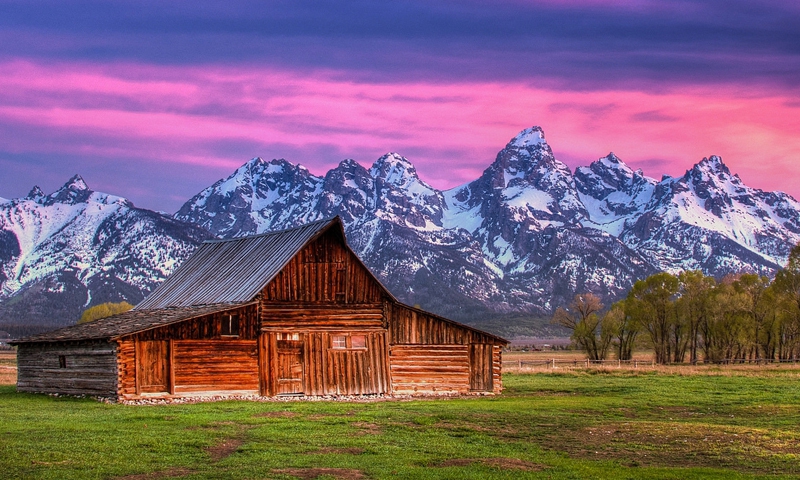- Mormon Row is located in Grand Teton National Park off Antelope Flats Rd, about one mile east from Hwy 26/89/191.
- Six historic homesteads and a single ruin provide visitors a glimpse into the history of Jackson Hole Valley.
- Late summer and early fall are the best times to visit.
Overview
Mormon Row was originally homesteads along the Jackson-Moran Road close to the southeast corner of Grand Teton National Park. The rural landscape contains six clusters of building which were once parts of early homesteads.
The Teton Mountains rise in the background, with spectacular beauty.
Location
Mormon Row is located in Grand Teton National Park off Antelope Flats Rd, about one mile east from Hwy 26/89/191. The Antelope Flats turnoff is just north of Moose Junction.
Seasons
Mormon Row is accessible year round, however in the winter, Antelope Flats Road is only plowed for the first mile to a parking turnout. From there you can take an easy cross-country ski or snowshoe out to Moulton Ranch. The Moulton Ranch barn is one of the most photographed historic buildings in Wyoming.
All roads are open during the summer providing easy access to the entire area.
There is no fee charged to explore and enjoy the area of Mormon Row.
Activities
Today, six homesteads and a single ruin provide visitors a glimpse into the homesteading history of Jackson Hole Valley and are listed on the U.S. National Register of Historic Places.
The open fields of surrounding the area are a great place to find bison, antelope, moose, coyotes, ground squirrels, northern harriers, kestrels and sage grouse.
In additional to wildlife viewing, the roads are good for easy level mountain biking in the summer and cross-country skiing or snowshoeing in the winter.
And don’t forget your camera.
Additional Info.
In addition to the six clusters of historic homestead buildings, you will see elaborate fence and corral systems; the Mormon Row Ditch system; remains of the Johnson/Eggleston Ditch; a domestic dump; a hay derrick; the community swimming hole dammed in an intermittent drainage; windrows marking the location of formal homes and of the community church; and the cultivated fields and pasturage laboriously cleared by the original settlers.
Late summer and early fall are the best times to visit.















